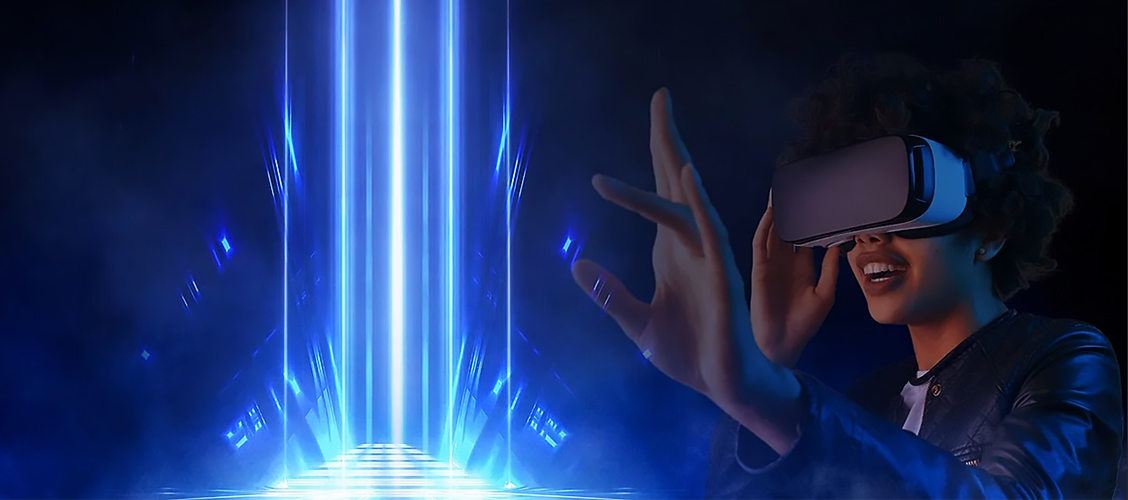
What Is the Metaverse and What Can We Expect from It?
The term Metaverse may be one that you’ve been hearing a lot more often lately. It refers to a computer-generated, virtual space wherein users can socialise and interact. Let’s explore some of the research being published on it.
Important MDPI research by Stylianos Mystakidis, in the journal Encyclopedia, explains: “The word Metaverse is a closed compound word with two components: Meta (Greek prefix meaning post, after or beyond) and universe. In other words, the Metaverse is a post-reality universe, a perpetual and persistent multiuser environment merging physical reality with digital virtuality.”
Virtual reality (VR) is purely a simulation, led by equipment such as a head-mounted display that transports the wearer into a fully immersive experience. Augmented reality (AR), meanwhile, changes the physical world by introducing digital elements. Examples of this include Google Glass and Pokémon GO.
The latest form of virtual space is mixed reality (MR), which mixes the real and the digital. Using specialised equipment, the user can still see the physical space, and place and interact with digital objects within it.
Access to the Metaverse could include any of these technologies.
Metaverse
The first Metaverse is thought to be Second Life, a platform created in 2003 by Linden Lab. It is an online space accessible via a computer, rather than using any VR, AR, or MR technologies.

The word ‘Metaverse’ itself was actually coined back in 1992 in Neal Stephenson’s sci-fi novel Snow Crash, in which people interact with each other via avatars.
However, the graph below shows global Google searches for the word ‘Metaverse’ between March 2017 and March 2022. There is a spike in searches at the end of 2021, when the Facebook company announced that it would be changing its name to Meta to better reflect its future VR-related endeavours.

Meta
Meta, formerly Facebook, is creating its own virtual reality Metaverse made up of 3D spaces to “socialize, learn, collaborate and play in ways that go beyond what we can imagine”.
Since then, various companies have followed, investing in the Metaverse. For example, in November 2021, Microsoft announced that it would be bringing out a new software called Mesh for Microsoft Teams. It will allow people to interact in the realm of the Metaverse, using virtual avatars.
Many suspect that the Metaverse and 3D spaces will be a large part of technology’s future. However, when it comes to the individual aspects of the software, there is still some work yet to be done before it reaches its full potential. In the paper ‘Individual’s Social Perception of Virtual Avatars Embodied with Their Habitual Facial Expressions and Facial Appearance’ in Sensors, the authors find that, by using technology to map an individual’s facial features onto their avatar, they can create better, more familiar representations of humans.

Interview with Stylianos Mystakidis

Stylianos Mystakidis, author of ‘Metaverse’ in the journal Encyclopedia, provided the definition above, and here answers important questions and what the future might look like under its influence.
How do you see the Metaverse developing over the coming years?
Stylianos Mystakidis: There is a race to construct new stacks and infrastructures for the Metaverse, so new devices, apps, and services are emerging at a phenomenal rate.
In your opinion, what changes will the Metaverse bring to research and the academic community?
SM: The Metaverse will have a massive impact on online distance learning. It will introduce new opportunities to address the shortcomings and limitations of current 2D e-learning systems, as illustrated in detail in the ‘Metaverse’ paper. Similarly, the Metaverse will further accelerate remote research collaboration in new fields and etiquette related to expanded and enhanced visualisation capabilities.
What do you think will be the most popular/primary equipment used for accessing the Metaverse?
SM: To start with, the primary devices will be different for different use cases and contexts, e.g., virtual reality (VR) for off-site simulated training and augmented reality (AR) for live on-site support. Eventually, we’ll probably have wearable extended reality (XR) devices that unify AR, mixed reality (MR), and VR.
What changes would you like to see next in the Metaverse research field? What are the next research steps?
SM: I am looking forward to studies that break down technological miscommunication between apps and software, and combine augmented reality/mixed reality (MR) and virtual reality to tackle significant problems using what immersive technologies can do.
Submit research to MDPI
MDPI welcomes research related to the Metaverse and expects to see it shape the way in which we communicate and interact with one another. There are plenty of opportunities to submit your research. See our full list of journals here.










